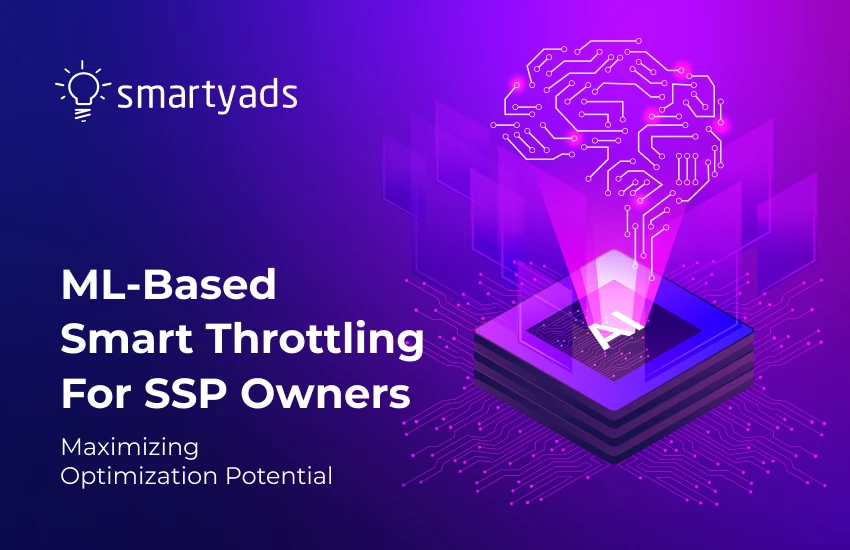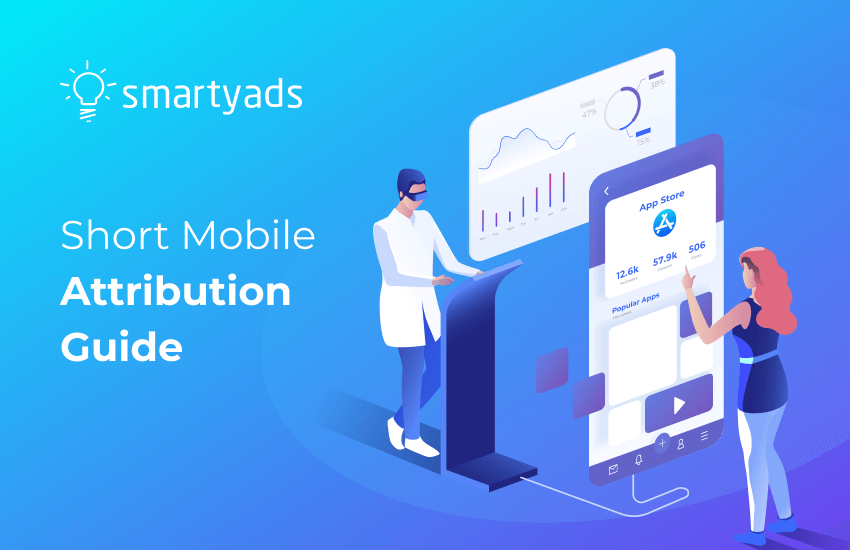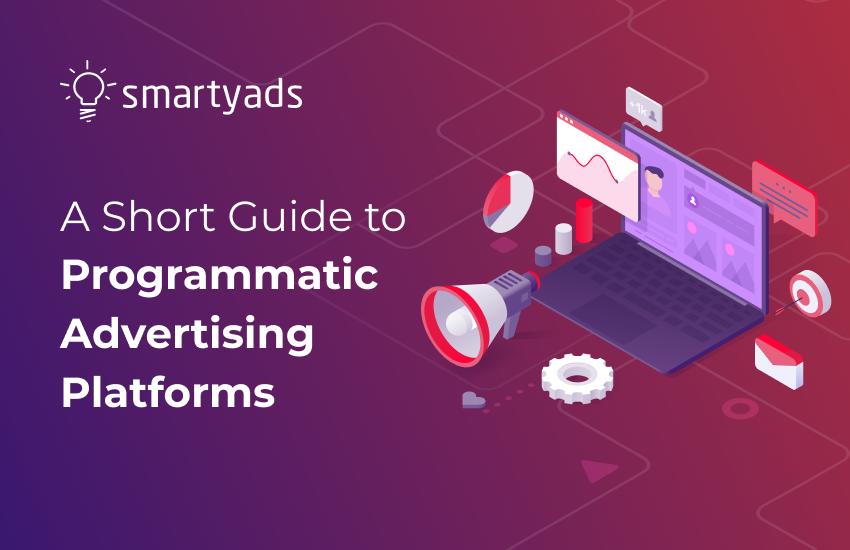In this article, we want to take a deeper look at the Smart Throttling feature that many ad platform owners are already familiar with. We will look at why the common and universalized title can hide completely different algorithms, and how various Smart Throttling models affect the spending and earnings of the supply-side platform. We will also present the Smart Throttling update for owners of ML-driven white-label SSP + Ad Exchange.
Key points
- The Smart Throttling tool is part of a larger process called supply-path optimization (SPO) that improves advertising inventory delivery.
- Smart Throttling is a unique process for each specific advertising platform. The optimization principle can be based on various metrics using legacy linear models or modern dynamic models with machine learning features. Optimization models with self-updated algorithms are of higher priority.
- SmartyAds white-label SSP + Ad Exchange owners can use the Smart Throttling process based on real CPM (RCPM) metrics to optimize bidding across different DSPs. In this way, users achieve two fundamental goals: maximizing revenue and minimizing expenses. Also, the platform has expanded the features for A/B testing and advanced reporting.
Smart Throttling as a component of the supply-path optimization (SPO) process
We have already covered the topic of supply-path optimization (SPO) and demand-path optimization (DPO) deeply in one of our previous articles on the SmartyAds Enterprise blog: called: SPO and DPO. The main idea of the article is to show that SPO and DPO are essential elements in the way of programmatic ecosystem development. And that these two processes are closely related and benefit both the demand and supply sides.
What is Smart Throttling?
Imagine how many bids one supply platform sends along the day. Millions of bid requests every second. And many of them are irrelevant due to the technical issues. Smart Throttling is a process of utilizing data-driven algorithms to restrict bidding with the demand-side partners that do not respond.
This process solves two fundamental issues.
- Minimizing expenses by reducing the number of irrelevant bid requests.
- Maximizing revenue by prioritizing successful ad bids with good campaign performance.
The Smart Throttling optimization process is unique for each specific advertising platform, being more or less effective depending on the model developed. Various optimization models are based on different metrics and formulas. That’s why each specific Smart Throttling model should be tested before scaling over all traffic volumes.
Interesting fact: the Smart Throttling process, when launched, reduces the carbon footprint. So platform owners can prevent global warming changes. That’s because SSP bids billions of times every month, and all the irrelevant bid requests sent to demand-side partners produce even more additional interactions between the other programmatic players. Each bid loads the servers all over the world, and that is the way it impacts the environment.
Static scripted optimization model
- In the context of this article, we will call linear models outdated due to their efficiency performance. Let’s take a look at the examples of legacy linear Smart Throttling models.
- Strict limitation of bid requests to DSPs that have not responded with relevant bids within the last hours.
- Substantial or complete restriction of bid requests to DSPs whose bid responses rarely win at real-time auctions.
Assigning the lowest level of priority to bids from DSPs that win auctions but whose impressions fail due to technical issues (timeout exceeded, connection-side errors, fraudulent ad redirects, etc.).
All linear models have one thing in common: they optimize the process of bidding according to a certain algorithm permanently. If restrictions are applied to a DSP, it means that they will be in effect constantly.
Linear algorithms do optimize the bidding process, but they do not revise the applied restrictions to improve achieved results dynamically. After all, in an hour, a day, or a week, one of the restricted DSPs can change its settings and start sending bids that meet the supply-side requirements.
Dynamic machine learning model
Dynamic Smart Throttling models are an evolutionary extension of linear optimization. SSP platforms’ developers use different metrics for optimization and apply various restrictions to reduce the expenses on bidding and increase profits. At the same time, all dynamic models are united by the process of collecting feedback: any restriction is not applied permanently, and there is a constant trends review — the platform tests different approaches for optimization based on updated data.
Dynamic Smart Throttling models use Big Data and Machine Learning technologies to achieve better optimization. It improves results and reduces the level of manual control over the bidding process.
Advantages of Smart Throttling by SmartyAds
Next, we will look at the Smart Throttling bidding optimization process designed by SmartyAds software developers and available to owners of white-label SSP out-of-the-box.
Smart Throttling based on real CPM (RCPM)
RCPM reflects the real gross amount of money the SSP platform gets per thousand impressions if we exclude all failed requests. And this is the metric we use to optimize bidding within the Smart Throttling process.
As mentioned above, it is possible to optimize bidding based on various metrics: keys, impressions, requests, winning bid rate, and other parameters. We chose RCPM because this metric has the strongest impact on the platform user's revenue compared to the others. What is beneficial for users becomes the priority for the SmartyAds team — that’s how we think when updating the platform's infrastructure.
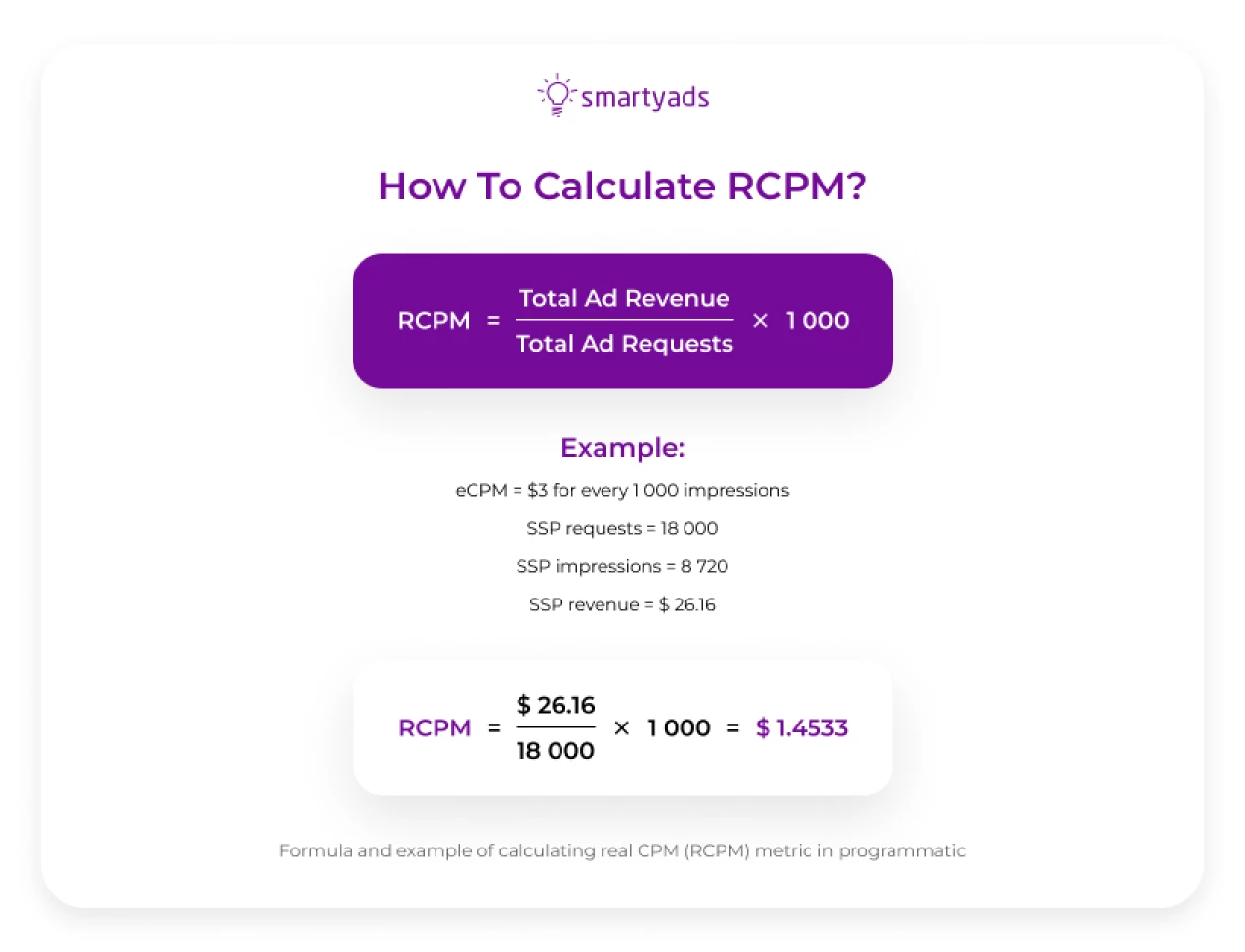
RCPM is a metric that calculates the real price per thousand impressions compared to all requests made to display the specific ad. The real CPM (RCPM) is always lower than the nominal CPM because some impressions do not take place due to technical, security, and other issues.
Dynamic optimization with per-hour updates
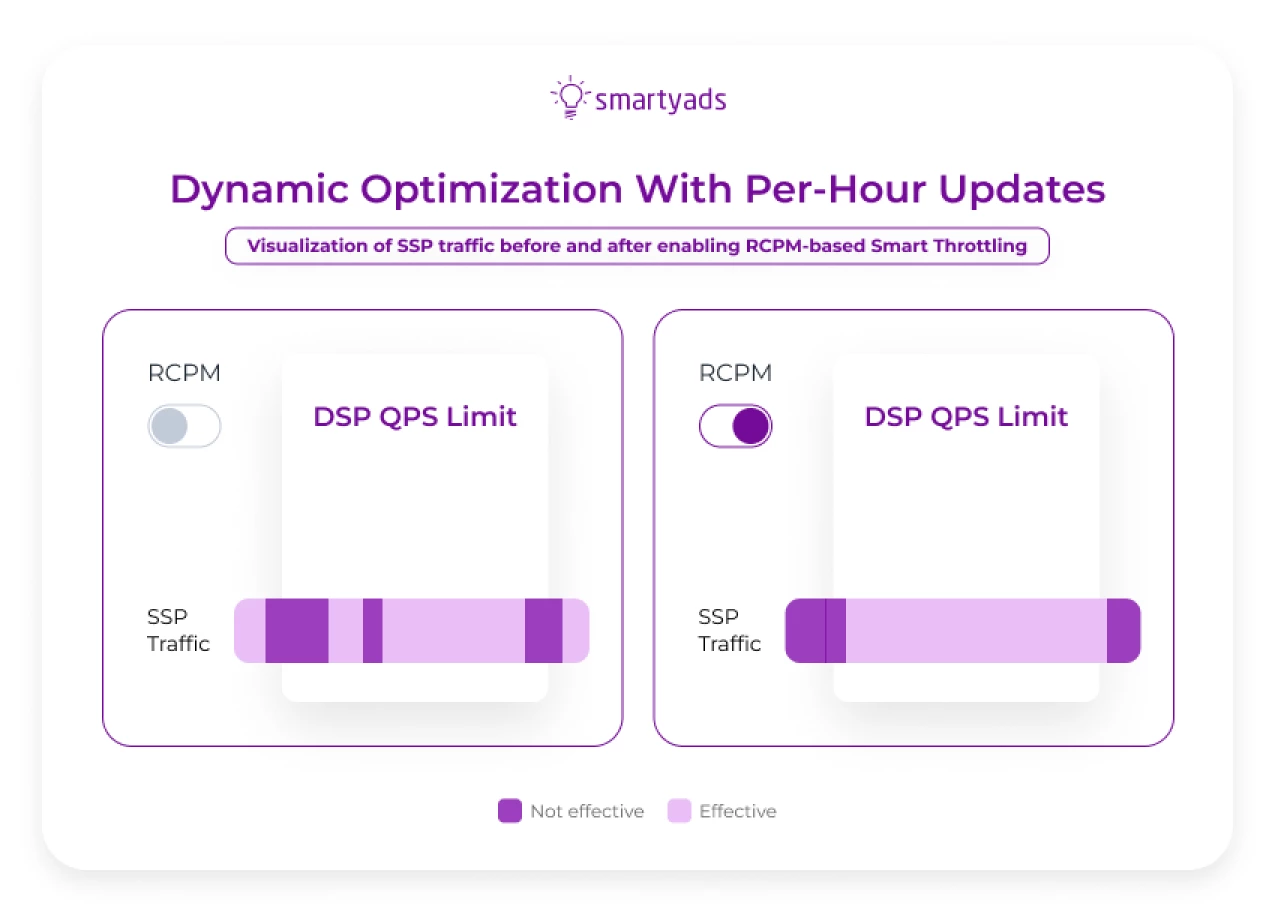
We have integrated a dynamic Smart Throttling process inside the white-label SSP + Ad Exchange that leverages machine learning technology for self-updating and self-improvement. We cannot disclose all the process features to maintain a competitive advantage. Anyway, we will be happy to explain in general terms the principle behind the traffic restrictions.
- If there are many requests and low impressions → the platform will drop 80% of such traffic to a particular DSP from the chain for the next hour.
Then these restrictions will be rechecked and self-updated to optimize SSP traffic. That’s how it works better in dynamic.
A/B testing for Smart Throttling and other features to fine-tune performance
We are updating A/B testing capabilities, so it will be more comfortable for users to test Smart Throttling and other features before scaling them over all traffic volumes. The platform will also gain separate reporting on traffic with different settings.
The main task of the A/B testing feature is to relieve the technical team. And provide the platform’s users with the ability to test features just enabling them with toggles. For instance: the RCPM option will optimize bidding, while Dynamic Margin will customize the process of paying rewards to the publishers. There are many more interesting options and enhancements in the coming 2.5 platform version. We work on improving the infrastructure to broaden the tools for boosting business results.
Unlimited features customization
It’s always the option to contact your account manager for help anytime you have customization requests. We also have two special presents for platform newcomers:
- guide on advanced analysis of SSP + Ad Exchange performance;
- and document on how to get the full potential of your SSP + Ad Exchange.
We wish you inspiration to continue developing the platform logic! SmartyAds engineering team can step in at any stage and customize the platform to your updated needs, provide advice on how to increase efficiency, and much more. We are motivated to improve the platform as much as you are.
Core aspects
Smart Throttling is a great feature for optimizing the outbound traffic of your SSP. Keep in mind that this title may hide different processes, more or less effective, but unique for each particular platform. Therefore, it is a good rule of thumb to test new features' performance on a small part of the traffic before scaling up. We also recommend reading technical documentation and consulting with experts in advance to be more confident.
The SmartyAds team spent a lot of time improving optimization algorithms and updating the platform's functionality. Some features are already available out-of-the-box, such as RCPM-based Smart Throttling and Dynamic Margin, some will become unlocked in the coming weeks. And we prepare even more releases over the year.
Our development plan remains unchanged: to meet the industry's challenges and stay ahead of the game. Contact us for consultation if you want to enter the programmatic market or solve any related issues.
